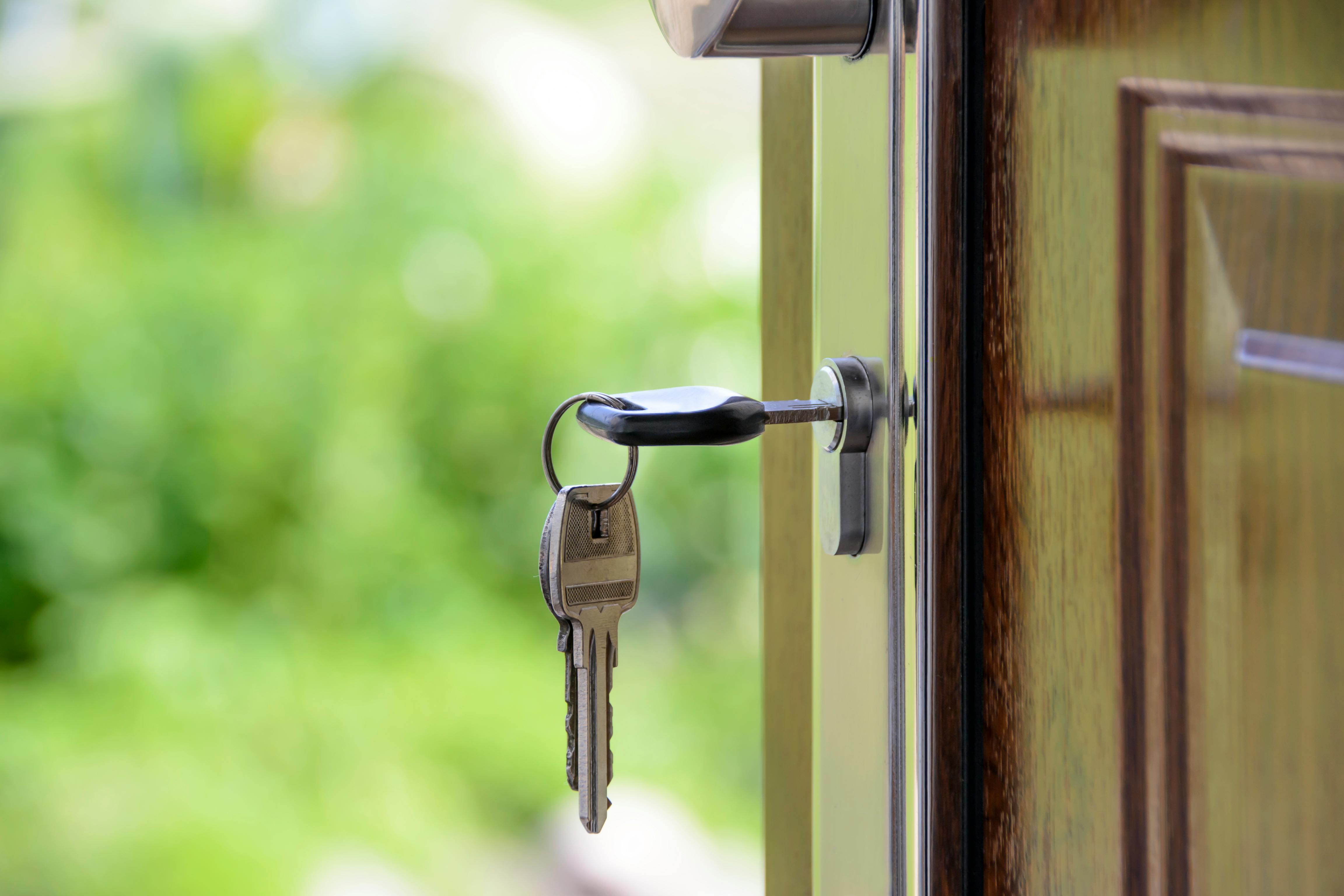Choosing a Strong WiFi Network Password
Use a combination of uppercase and lowercase letters
When choosing a password for your WiFi network, it is important to create a strong and secure one to protect your wireless security. One way to do this is by using a combination of uppercase and lowercase letters. By mixing upper and lower case letters, you increase the complexity of the password, making it harder for others to guess or crack it.
Include numbers and symbols
To further enhance the strength of your WiFi network password, consider including numbers and symbols. By incorporating numbers and symbols into your password, you add an additional layer of complexity. This makes it even more difficult for potential intruders to guess or gain access to your network.
Avoid using personal information
When creating your WiFi network password, it is crucial to avoid using any personal information. This includes your name, birthdate, address, or any other easily accessible details about you. Using personal information as your password makes it much easier for hackers to potentially exploit your network.
Create a long password
A longer password is generally considered more secure than a shorter one. Aim to create a password that is at least 12 characters long. The longer the password, the harder it is for hackers to crack. Consider using a combination of letters, numbers, and symbols to create a strong and lengthy password.
Change your password periodically
Lastly, it is essential to change your WiFi network password periodically. This is an effective way to maintain the security of your network. By regularly updating your password, you reduce the risk of unauthorized access and keep potential intruders at bay.
By following these guidelines and implementing a strong WiFi network password for your router, you can ensure the security and privacy of your wireless network. Remember, a strong password is a key aspect of protecting your digital information and maintaining your online safety.

This image is property of images.pexels.com.
## Creating and Updating Router Passwords
Access the router’s administration interface
To manage your WiFi network passwords and enhance your wireless security, the first step is accessing your router’s administration interface. This can typically be done by entering the default IP address provided by your router manufacturer into your web browser. Once there, you might need to enter a username and password, which can usually be found on the router itself or in the user manual.
Locate the password settings
After accessing the administration interface, navigate to the password settings section. This is where you can update your router’s password to something more secure and personalized. Remember to avoid easily guessable options like birthdays or common phrases.
Choose a strong router password
When creating a new router password, it’s important to choose a combination of uppercase and lowercase letters, numbers, and special characters. This will significantly enhance the security of your network and prevent unauthorized access.
Update the router password regularly
Regularly updating your router password is crucial for maintaining a secure WiFi network. Aim to change it every few months to prevent any potential breaches. This simple practice ensures that even if someone gains access to your current password, their access will be limited over time.
Implement two-factor authentication (2FA)
For an extra layer of protection, consider implementing two-factor authentication (2FA) on your router. This will require a second form of verification, such as a unique code sent to your mobile device, in addition to your password. 2FA adds an extra level of security, reducing the risk of unauthorized access.
By following these steps, you can effectively manage your WiFi network passwords for your router and improve your wireless security. Remember, regularly updating your router password and enabling additional security measures like two-factor authentication are essential practices to keep your network safe from potential threats.

This image is property of images.pexels.com.
## Managing Guest Network Passwords
One important aspect of managing your WiFi network’s passwords is ensuring the security and control of your guest network. This is crucial to protect your personal devices and data, while providing a convenient and secure way for guests to access the internet in your home or office.
Enable the guest network feature
Start by enabling the guest network feature on your router. Most modern routers come with this feature built-in, allowing you to create a separate network for visitors.
Set a separate password for guests
Once the guest network is enabled, set a unique password specifically for your guests. Avoid using the same password as your main WiFi network to ensure the security of your personal devices and sensitive information.
Limit guest network access
To ensure a secure environment, consider setting limitations on the guest network. You can restrict access to specific websites or block certain services to prevent unauthorized usage.
Change the guest network password regularly
Regularly changing the guest network password adds an extra layer of security. Aim to update the password every few months or whenever you feel it is necessary to reduce the risk of unauthorized access.
Monitor guest network usage
Keeping an eye on the usage of your guest network is important to detect any suspicious or unwanted activity. Monitor the devices connected to the network and check for any unusual behavior.
By following these guidelines, you can effectively manage your WiFi network’s passwords and enhance the overall security and convenience of your home or office network.
Protecting WiFi Network with Encryption
Wireless security is a crucial aspect of managing your WiFi network passwords. By enabling encryption, you can ensure that your network remains safe and secure from unauthorized access. Here are some essential steps to follow:
Enable WPA2 or WPA3 encryption
Start by enabling either WPA2 or the latest WPA3 encryption on your router. Both provide robust security features that make it significantly harder for hackers to breach your network.
Choose a strong encryption passphrase
When setting up encryption, choose a strong and unique Wi-Fi password. Make sure to include a combination of uppercase and lowercase letters, numbers, and special characters. Avoid using easily guessable information, such as birthdays or common words.
Disable older and insecure encryption options
To enhance WiFi security, disable older and insecure encryption options like WEP (Wired Equivalent Privacy). These outdated protocols are vulnerable to numerous attacks and can compromise the integrity of your network.
Regularly update encryption protocols
It’s important to keep your encryption protocols up to date. Check for firmware updates on your router manufacturer’s website regularly, as these include essential security patches to counter the evolving threats.
Restrict access to authorized devices
Utilize features like MAC address filtering on your router to restrict access only to authorized devices. By adding the MAC addresses of trusted devices, you can ensure that only those devices can connect to your network, further enhancing its security.
By following these steps, you can effectively manage your WiFi network passwords for router and wireless security. Keep your network safe and enjoy the benefits of a secure and reliable internet connection.

This image is property of images.pexels.com.
## Enabling Firewall and Security Features
WiFi security is crucial to protect your network and personal information from unauthorized access. One essential aspect of managing WiFi network passwords is to enable firewall and security features on your router. This ensures an added layer of protection against potential threats.
Enable the router’s built-in firewall
Most routers come with a built-in firewall that acts as a barrier between your network and the internet. You should check your router’s settings and ensure that the firewall is enabled. This helps in blocking unwanted traffic and potential hackers attempting to gain unauthorized access to your network.
Configure firewall settings
To maximize your network security, it’s important to configure your firewall settings properly. You can choose to allow or block specific types of traffic based on your needs and preferences. For example, you can block specific ports commonly targeted by cybercriminals or restrict access to certain websites.
Use additional security features like IDS or IPS
In addition to the firewall, consider using Intrusion Detection System (IDS) or Intrusion Prevention System (IPS) to enhance your network’s security. These systems monitor network traffic for suspicious activities and can block potential threats in real-time.
Regularly update firewall and security software
To stay protected against the latest vulnerabilities and security risks, it’s crucial to update your firewall and security software regularly. Manufacturers often release firmware updates that include security patches. Make it a habit to check for updates periodically and apply them promptly.
Monitor and review security logs
Lastly, you should regularly monitor and review the security logs of your router’s firewall. By analyzing the logs, you can identify any suspicious activities or potential breaches. This allows you to take necessary actions promptly to safeguard your network.
By following these steps and managing your WiFi network passwords effectively, you can significantly enhance your router and wireless security. Remember to stay proactive in implementing security measures and stay vigilant against potential threats.
Implementing MAC Address Filtering
Access the router’s MAC Address Filtering settings
To enhance the security of your WiFi network, implementing MAC Address Filtering is a recommended measure. This feature allows you to control which devices can connect to your network based on their unique MAC addresses. To get started, access your router’s settings by typing the IP address into your web browser.
Enable MAC Address Filtering
Once you have accessed your router’s settings, locate the MAC Address Filtering section. Enable this feature to activate the filtering process. This will prevent unauthorized devices from connecting to your WiFi network.
Add permitted MAC addresses
To allow specific devices to access your network, you need to add their MAC addresses to the permitted list. You can find the MAC address of a device in its network settings or by using a MAC address lookup tool. Simply enter each MAC address into the designated area, and save the changes.
Regularly review and update MAC Address Filtering settings
Over time, your network may undergo changes, such as new devices or replacements. It is crucial to regularly review and update the MAC Address Filtering settings to ensure that only authorized devices are able to connect to your network.
Monitor and track connected devices
To maintain optimal security, it is important to monitor and track all connected devices. Regularly check the connected device list in your router’s settings to verify their legitimacy. If any unfamiliar devices are detected, you can promptly address any potential security issues.
By implementing MAC Address Filtering and following these steps, you can bolster the security of your WiFi network, minimizing the risk of unauthorized access and ensuring that only trusted devices connect to your network.
Disabling WPS (WiFi Protected Setup)
Wireless security is crucial to protect your network and personal information from unauthorized access. One common method used to secure your WiFi network is by managing your network passwords for your router. One important step in this process is disabling the WiFi Protected Setup (WPS) feature on your router.
Access the router’s WPS settings
To begin, access your router’s settings by typing your router’s IP address into your web browser. Once logged in, navigate to the WPS settings page.
Disable WPS functionality
Find the option to disable the WPS feature and click on it. Disabling WPS ensures that any attempt to connect to your router using WPS will be unsuccessful.
Use alternative authentication methods
Instead of relying on WPS, consider using other authentication methods, such as a strong password or passphrase. This ensures that only authorized users can access your WiFi network.
Ensure devices do not utilize WPS
Check the settings of all your connected devices to ensure that WPS is not enabled. Disabling WPS on your router won’t be effective if any of your devices are still utilizing it.
Regularly update router firmware
Lastly, keep your router’s firmware up-to-date. This ensures that any security vulnerabilities are patched, providing you with the latest security features. Check your router manufacturer’s website for firmware updates and follow their instructions to install them.
By following these steps, you can effectively manage your WiFi network passwords for your router and enhance the security of your wireless network. Stay safe online!
Keeping Router Firmware Up to Date
Access the router’s firmware settings
To ensure the optimal performance and security of your WiFi network, it is crucial to keep your router’s firmware up to date. Start by accessing the router’s firmware settings, which can be done by typing the router’s IP address into a web browser.
Check for firmware updates
Once you have accessed the firmware settings, look for the option to check for firmware updates. This may be located under a tab labeled “Firmware” or “Software Update.” Click on this option to see if there are any available updates for your router’s firmware.
Download and install the latest firmware version
If there are firmware updates available, download the latest version onto your computer or device. Then, follow the manufacturer’s instructions to install the firmware onto your router. This process may differ depending on the router brand and model, so be sure to read through the instructions carefully.
Backup and restore router settings
Before updating your router’s firmware, consider backing up your current settings. This will allow you to revert to your previous configuration if any issues arise during the update process. Most routers have an option to backup and restore settings within the firmware settings menu.
Securing Physical Access to the Router
When it comes to managing WiFi network passwords for your router and ensuring wireless security, it’s important to secure physical access to the router. By taking a few precautions, you can prevent unauthorized individuals from tampering with your network settings or gaining access to your personal information.
Choose a secure physical location for the router
Start by selecting a secure physical location for your router. Ideally, this should be a spot that is not easily accessible to strangers or visitors. Avoid placing it near windows or doors where it can be easily seen or targeted.
Lock the router in a cabinet or secure area
To add an extra layer of protection, consider locking your router in a cabinet or secure area. This will help prevent unwanted physical access and deter potential attackers.
Restrict physical access to authorized personnel
Make sure to limit physical access to the router to authorized personnel only. Communicate the importance of keeping the router secure to everyone in your household or workplace.
Regularly check for tampering or unauthorized modifications
Frequently inspect the router for any signs of tampering or unauthorized modifications. Look for any unusual blinking lights, loose cables, or unfamiliar devices connected to the network.
Consider using security cameras for monitoring
For added security, consider installing surveillance cameras near the router to monitor any physical activity and deter potential intruders.
By following these steps to secure physical access to your router, you can better protect your WiFi network and ensure the safety of your personal information. Remember, keeping your wireless security measures up-to-date is essential in today’s connected world.
Regularly Auditing and Monitoring Network
Perform periodic network security audits
To ensure the safety and integrity of your WiFi network, it is important to regularly conduct security audits. These audits involve checking for any weak points or unauthorized access points in your network. You can start by performing a thorough review of your router settings and ensuring that you have a strong, unique password. Additionally, you should also inspect all connected devices to identify any potential vulnerabilities. By regularly auditing your network, you can proactively address any security issues and minimize the risk of unauthorized access.
Use network monitoring software
Utilizing network monitoring software can be incredibly helpful in managing your WiFi network passwords and maintaining wireless security. This software allows you to keep track of all devices connected to your network and detect any unusual activities or unauthorized access attempts. It provides real-time alerts and notifications, giving you the ability to respond immediately to any potential threats. Network monitoring software also helps you identify bandwidth hogs or any suspicious network traffic, enhancing your overall network security.
Monitor connected devices and network traffic
Alongside network monitoring software, it is crucial to actively monitor all connected devices and network traffic. Regularly check the list of devices connected to your WiFi network to verify their legitimacy. If you notice any unfamiliar devices, investigate further to ensure that unauthorized access is not occurring. Additionally, keep an eye on your network traffic to detect any unusual patterns or suspicious activity. By closely monitoring these aspects, you can promptly address any potential security breaches and protect your network from unauthorized individuals.
Identify and address any vulnerabilities
Part of managing WiFi network passwords and ensuring wireless security is to identify and address any existing vulnerabilities. Stay up-to-date with the latest security patches and firmware updates for your router and connected devices. Regularly check for any security vulnerabilities that might be known for your specific router model and take appropriate actions to mitigate them. By promptly addressing these vulnerabilities, you can reduce the risk of being a target for cyberattacks and keep your network secure.
Stay informed about the latest security threats
Lastly, it is essential to stay informed about the latest security threats in the WiFi network and wireless security landscape. Cyber threats continually evolve, and being aware of new techniques used by hackers can help you stay one step ahead. Monitor security forums, subscribe to cybersecurity newsletters, and follow reputable sources that provide insights into the latest security trends. By staying informed, you can learn about potential vulnerabilities and take proactive measures to protect your WiFi network passwords and preserve wireless security.
Regularly auditing and monitoring your network, utilizing network monitoring software, monitoring connected devices and network traffic, identifying and addressing vulnerabilities, and staying informed about security threats are all crucial steps in managing WiFi network passwords for router and wireless security. By implementing these practices, you can ensure a secure and protected WiFi network for yourself and your users.
